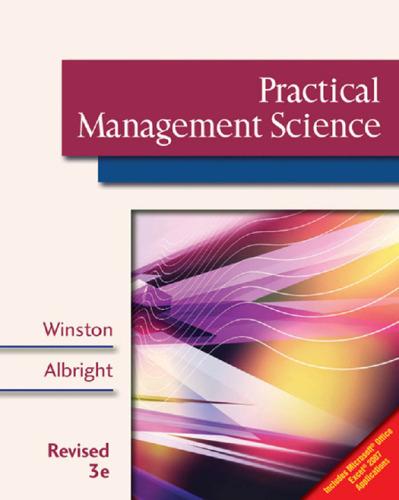The first (R,Q) model in this section assumes that the total shortage cost is proportional to the
Question:
The first (R,Q) model in this section assumes that the total shortage cost is proportional to the amount of demand that cannot be met from on-hand inventory.
Similarly, the second model assumes that the service level constraint is in terms of the fill rate, the fraction of all customer demand that can be met with on-hand inventory. Consider the following variations of these models. The first, labeled model 3, assumes that a shortage cost is incurred on every order cycle that experiences a stockout. This cost is independent of the size of the stockout. The second model, labeled model 4, prescribes a service level constraint but now on the fraction of order cycles that experience no stockouts.
a. In each of these new models, we need to calculate the probability of a stockout during an order cycle.
This is the probability that the demand during lead time is greater than the safety stock. Assuming that demand during lead time is still normally distributed, how can this probability be calculated? (Hint:
Use the NORMDIST or NORMSDIST function.)
b. Given your method in part
a, solve the model from Example 13.7 when the cost of having a shortage in any cycle is $100, and all other parameters are as before. What are the optimal reorder point and the safety stock level?
c. Continuing part
b, what model 4 service level constraint is this $100 stockout cost equivalent to?
Step by Step Answer:

Practical Management Science, Revised
ISBN: 9781118373439
3rd Edition
Authors: Wayne L Winston, S. Christian Albright






